
22 Business Books That Blew My Mind And Changed Me
Vladislav Solodkiy, Managing Partner, Life.SREDA VC:
I am often asked for tips on good books to read. Recently I have posted an article in Russian listing my favourite business books, which got over 70 thousand views. I hope that the English-speaking folks will also find it useful.
1. Tony Hsieh – Delivering Happiness: A Path to Profits, Passion, and Purpose
 To my great embarrassment, I only read this book at the beginning of 2013, although it was published in 2010. Filled with its very special “chemistry” and energy, the book describes a journey of an Entrepreneur from its very beginning. Basically, the book is about corporate culture and values that unite employees. It illustrates that meeting not only functional needs but also intellectual, spiritual and aesthetic needs of customers is more important than the chase for money. The money comes as the result of this approach. There is one point of the story that really grabbed me. During the first several years the company – and, consequently, the fund that invested into it – was bearing losses struggling to build up successful business processes. In order to cut the expenses, Hsieh suggested that they should move to Las Vegas, which was more cost-effective in terms of office space rent, salary rates, and so on. He hoped for about 30 of the 90 employees to agree to that, however 70 volunteered to go.
To my great embarrassment, I only read this book at the beginning of 2013, although it was published in 2010. Filled with its very special “chemistry” and energy, the book describes a journey of an Entrepreneur from its very beginning. Basically, the book is about corporate culture and values that unite employees. It illustrates that meeting not only functional needs but also intellectual, spiritual and aesthetic needs of customers is more important than the chase for money. The money comes as the result of this approach. There is one point of the story that really grabbed me. During the first several years the company – and, consequently, the fund that invested into it – was bearing losses struggling to build up successful business processes. In order to cut the expenses, Hsieh suggested that they should move to Las Vegas, which was more cost-effective in terms of office space rent, salary rates, and so on. He hoped for about 30 of the 90 employees to agree to that, however 70 volunteered to go.
In June of 2013 my team and I visited Tony Hsieh at his Zappos headquarters.
In 2013, Zappos began transitioning to “Holacracy,” an alternative management system that replaces a pyramidal hierarchy with a network of circles dedicated to specific functions like marketing or HR, and ditches traditional management. Job titles are replaced with “roles” that employees can accumulate. This past March, CEO Tony Hsieh decided the transition was moving too slowly and offered employees a severance package to leave the company if they didn’t agree with its direction. By May, 210 of the roughly 1,500 employees (14%) took the deal, and the Amazon-owned online retailer was all in with “Holacracy”.
2. Blake Mycoskie – Start Something That Matters
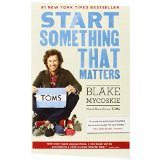 In my opinion, Tony Hsieh and Blake Mycoskie have much more in common than simply shoes. I love TOMS shoes – they are nice and comfortable, simple and cheap. But most importantly, they are produced by a company, which is more about making an ethical choice rather than just making profit. TOMS offers shoes for casual wear following its “One for One” business model – you but one pair for yourself and another pair of shoes goes to those in need in poor African countries. In America you will meet somebody wearing TOMS shoes every three minutes, and I bet you’ll like him and relate to him. „Start something that matters” tells the story of TOMS, as well as around ten other companies which have inspired Blake (like Tony Hsieh’s Zappos). Interestingly, TOMS and other similar companies are now called story-doing companies as opposed to the story-telling ones. By the way, TOMS already has its followers: the fintech-startup CommonBond focusing on student loans, as well as the BOGO company with its one-for-one housing model.
In my opinion, Tony Hsieh and Blake Mycoskie have much more in common than simply shoes. I love TOMS shoes – they are nice and comfortable, simple and cheap. But most importantly, they are produced by a company, which is more about making an ethical choice rather than just making profit. TOMS offers shoes for casual wear following its “One for One” business model – you but one pair for yourself and another pair of shoes goes to those in need in poor African countries. In America you will meet somebody wearing TOMS shoes every three minutes, and I bet you’ll like him and relate to him. „Start something that matters” tells the story of TOMS, as well as around ten other companies which have inspired Blake (like Tony Hsieh’s Zappos). Interestingly, TOMS and other similar companies are now called story-doing companies as opposed to the story-telling ones. By the way, TOMS already has its followers: the fintech-startup CommonBond focusing on student loans, as well as the BOGO company with its one-for-one housing model.
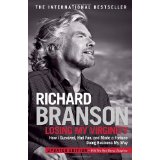 The autobiography of the Virgin empire founder and owner has remained a bestseller for many years, and it is still up-to-date. It’s just as fascinating a read as, say, a British novel about some rebellious teenager growing up. He started his entrepreneur journey at school issuing a local youth culture magazine, which later became famous on a national scale, with all the rock stars of the time appearing in it. I did not know that he was dyslexic and had trouble remembering facts and information not experienced by him personally. He made lots of mistakes, however his parents never blamed him for it – they were always there to recognize his achievements. Even at his lowest moments his mother told him: “Let’s not discuss what happened – sure you’ve drawn the right conclusions out of it. Let’s just concentrate on how we make it right again.” To me his Virgin Records was always associated only with the Sex Pistols, but it turned out they worked with more than a half of the rock stars of the time. The most stunning about Branson’s book is the honesty of his story, the authentic and genuine way he talks about his mistakes and lessons learned. The vibrant feeling of passion for entrepreneurship just flows into the reader’s mind with every page. I had the chance to meet Branson personally in October of 2012 during our fintech-conference “Money of the Future”.
The autobiography of the Virgin empire founder and owner has remained a bestseller for many years, and it is still up-to-date. It’s just as fascinating a read as, say, a British novel about some rebellious teenager growing up. He started his entrepreneur journey at school issuing a local youth culture magazine, which later became famous on a national scale, with all the rock stars of the time appearing in it. I did not know that he was dyslexic and had trouble remembering facts and information not experienced by him personally. He made lots of mistakes, however his parents never blamed him for it – they were always there to recognize his achievements. Even at his lowest moments his mother told him: “Let’s not discuss what happened – sure you’ve drawn the right conclusions out of it. Let’s just concentrate on how we make it right again.” To me his Virgin Records was always associated only with the Sex Pistols, but it turned out they worked with more than a half of the rock stars of the time. The most stunning about Branson’s book is the honesty of his story, the authentic and genuine way he talks about his mistakes and lessons learned. The vibrant feeling of passion for entrepreneurship just flows into the reader’s mind with every page. I had the chance to meet Branson personally in October of 2012 during our fintech-conference “Money of the Future”.
4. Howard Schultz – Onward: How Starbucks Fought for Its Life without Losing Its Soul
 Unlike Richard Branson, whose journey began in his early years, Starbucks’ owner Howard Schultz started off towards his passion somewhat later. His spirit of entrepreneurship evolved when he was in his thirties. A successful manager, he was quite new in the coffee industry. Starbucks was already a well-established company when he joined it. However, it was only well-known in one state, and the business was focused on selling coffee beans. Schultz’s story is a fascinating love story about his love for the business owned by shareholders who founded it; about motivation and inspiration they gave him, which he carried further to give the business new opportunities with respect to marketing, product and distribution development; and how he finally acquired the company to make it one of the most widely-known all over the world. Indeed, love is the right word to describe his story. I’m not easily touched, but the unique way this book was written fascinated me and nearly brought tears to my eyes. (Note that today Starbucks is one of the major fintech players with fantastic results of their pre-order mobile applications and investments into Square).
Unlike Richard Branson, whose journey began in his early years, Starbucks’ owner Howard Schultz started off towards his passion somewhat later. His spirit of entrepreneurship evolved when he was in his thirties. A successful manager, he was quite new in the coffee industry. Starbucks was already a well-established company when he joined it. However, it was only well-known in one state, and the business was focused on selling coffee beans. Schultz’s story is a fascinating love story about his love for the business owned by shareholders who founded it; about motivation and inspiration they gave him, which he carried further to give the business new opportunities with respect to marketing, product and distribution development; and how he finally acquired the company to make it one of the most widely-known all over the world. Indeed, love is the right word to describe his story. I’m not easily touched, but the unique way this book was written fascinated me and nearly brought tears to my eyes. (Note that today Starbucks is one of the major fintech players with fantastic results of their pre-order mobile applications and investments into Square).
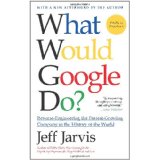 It’s a great and very dynamic book about business in the Internet Era. Not just some worn-out clichés about the new perspectives, but a rigid and very pragmatic set of rules and implications the Internet brings to any business today. The new „Google style“ business model implies that you persist in developing your product not because you evaluated the risks and the profit, but just because you know that you offer an interesting and innovative product of highest quality. Only later you figure out where exactly the money will be coming from (Google almost went bankrupt at the beginning not actually knowing what will bring them the money). I’d also recommend reading Google Speaks: Secrets of the World’s Greatest Billionaire Entrepreneurs, Sergey Brin and Larry Page by Janet Lowe! Totally different from the first one, since it is more a biography than a business & economics book. Lots of interesting facts about the lives of Google founders Sergey Brin and Larry Page, a detailed history behind the company’s evolution and a lot of wonderful sketches of the Google-employees’ working days.
It’s a great and very dynamic book about business in the Internet Era. Not just some worn-out clichés about the new perspectives, but a rigid and very pragmatic set of rules and implications the Internet brings to any business today. The new „Google style“ business model implies that you persist in developing your product not because you evaluated the risks and the profit, but just because you know that you offer an interesting and innovative product of highest quality. Only later you figure out where exactly the money will be coming from (Google almost went bankrupt at the beginning not actually knowing what will bring them the money). I’d also recommend reading Google Speaks: Secrets of the World’s Greatest Billionaire Entrepreneurs, Sergey Brin and Larry Page by Janet Lowe! Totally different from the first one, since it is more a biography than a business & economics book. Lots of interesting facts about the lives of Google founders Sergey Brin and Larry Page, a detailed history behind the company’s evolution and a lot of wonderful sketches of the Google-employees’ working days.
6. Kjell A. Nordstrom and Jonas Ridderstrale – Funky Business: Talent Makes Capital Dance
 The main idea the book conveys is that if your business is attractive, interesting, innovative, fascinating, and bright – or, to put it short, funky – it is doomed to become nothing but a success. FUNK functionality, it no longer counts! The world is full of surprises, irrational feelings and spontaneous actions. It needs an inspiring, unpredictable, funky business. This book shows how to create a business not with a commodity product, but with a high added value, which will make you not just good, but the best. “Read our lips. You cannot expect the customer to think the unthinkable. You may well think of yourself as a demanding and sophisticated customer. You may well be right. But would you have imagined that there could be a market for a tiny electrical chicken which requires regular feeding, nurturing and entertainment otherwise it dies? Yet, the Tamagotchi – the tiny pet from cyberspace – was one of the great success stories of 1997. Gallery visitors did not tell Picasso to invent cubism. Jazz fanatics did not suggest that Miles Davies should work with hip-hoppers. Moviegoers did not propose to Lars von Trier, the Danish film director, that he make “Breaking the Waves”. And customers sure as hell did not come up with the idea for CDNow or Amazon.com. If you want to do something really interesting and revolutionary, learn to ignore your customers. Most customers function as rearview mirrors. They are extremely conservative and boring, lack imagination, and don’t know their own minds. If customers are constantly beating you to new ideas, hire them or get another job.”
The main idea the book conveys is that if your business is attractive, interesting, innovative, fascinating, and bright – or, to put it short, funky – it is doomed to become nothing but a success. FUNK functionality, it no longer counts! The world is full of surprises, irrational feelings and spontaneous actions. It needs an inspiring, unpredictable, funky business. This book shows how to create a business not with a commodity product, but with a high added value, which will make you not just good, but the best. “Read our lips. You cannot expect the customer to think the unthinkable. You may well think of yourself as a demanding and sophisticated customer. You may well be right. But would you have imagined that there could be a market for a tiny electrical chicken which requires regular feeding, nurturing and entertainment otherwise it dies? Yet, the Tamagotchi – the tiny pet from cyberspace – was one of the great success stories of 1997. Gallery visitors did not tell Picasso to invent cubism. Jazz fanatics did not suggest that Miles Davies should work with hip-hoppers. Moviegoers did not propose to Lars von Trier, the Danish film director, that he make “Breaking the Waves”. And customers sure as hell did not come up with the idea for CDNow or Amazon.com. If you want to do something really interesting and revolutionary, learn to ignore your customers. Most customers function as rearview mirrors. They are extremely conservative and boring, lack imagination, and don’t know their own minds. If customers are constantly beating you to new ideas, hire them or get another job.”
This book does not claim to state any ultimate truths; it just exercises your brain, making you take a look at business – and yourself – from a different perspective. “To get some fresh input visit art galleries, go to rave parties, listen to opera, hang out with alcoholics or druggies, read stuff that you are not really interested in – do anything that you have never done before. Try it out – surf the Web, go skydiving, visit a museum.”
“Normality is the route to nowhere. If we are only willing to behave like all the others, we will see the same things, hear the same things, hire similar people, come up with similar ideas, and develop identical products or services. We will drown in the sea of normality. And Normal Inc. is bankrupt.” This book made me join the EMBA program at the Stockholm School of Economics, where these guys teach.
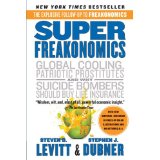 To achieve the desired result, it often takes a lot of power of mind and will just to go beyond the boundaries of the standard way of thinking. Basically, business success, as well as the effectiveness of state governance, highly depends on the ability to rise above the traditional approaches. This book is in no way meant to teach economics. Much rather is it meant to stimulate new ideas, channeling the standardized thinking into new areas and challenging it with inventive tasks. Both “Freakonomics” and “SuperFreakonomics” present various cases touching upon different spheres of our life with pretty unexpected conclusions and hypotheses offered by the authors. Unfortunately, they do not outline the algorithm allowing them to play with the data so brilliantly, exploring the hidden side of everything and often finding genius solutions. By the way, one of the cases the book presents was later shown in the “Moneyball” movie with Brad Pitt as a baseball team manager. This film also illustrates the beauty of Levitt and Dubner’s sensational approach.
To achieve the desired result, it often takes a lot of power of mind and will just to go beyond the boundaries of the standard way of thinking. Basically, business success, as well as the effectiveness of state governance, highly depends on the ability to rise above the traditional approaches. This book is in no way meant to teach economics. Much rather is it meant to stimulate new ideas, channeling the standardized thinking into new areas and challenging it with inventive tasks. Both “Freakonomics” and “SuperFreakonomics” present various cases touching upon different spheres of our life with pretty unexpected conclusions and hypotheses offered by the authors. Unfortunately, they do not outline the algorithm allowing them to play with the data so brilliantly, exploring the hidden side of everything and often finding genius solutions. By the way, one of the cases the book presents was later shown in the “Moneyball” movie with Brad Pitt as a baseball team manager. This film also illustrates the beauty of Levitt and Dubner’s sensational approach.
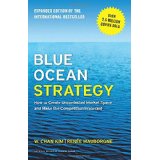 The book deals with the requirements for strategic business success. It shows that lasting success can hardly come from head-to-head competition of rivals over a share within the same market space (resulting in a “red ocean” of blood). It will much rather come from creating and capturing “blue oceans” – unrevealed or new market spaces with a potential for growth. The book presents the story of Cirque du Soleil, the New York police (also touched upon in “Freakonomics”), as well as many other curious and helpful cases. One of the few books that really challenge the traditional thinking of a “highly-effective manager”, it makes you take a different look at the path to profitable growth.
The book deals with the requirements for strategic business success. It shows that lasting success can hardly come from head-to-head competition of rivals over a share within the same market space (resulting in a “red ocean” of blood). It will much rather come from creating and capturing “blue oceans” – unrevealed or new market spaces with a potential for growth. The book presents the story of Cirque du Soleil, the New York police (also touched upon in “Freakonomics”), as well as many other curious and helpful cases. One of the few books that really challenge the traditional thinking of a “highly-effective manager”, it makes you take a different look at the path to profitable growth.
9. Malcolm Gladwell – The Tipping Point: How Little Things Can Make a Big Difference
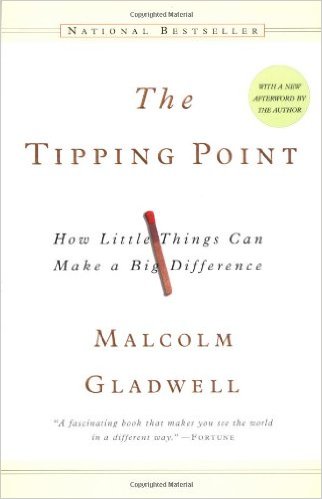 In this book Gladwell offers an analysis of how trends are sparked and take hold. What and how exactly can you do, which audiences and under what conditions should you target to turn your product or idea into a popular and influential trend, spreading like an epidemic? The answer to this question really matters, considering that feedback and recommendations of friends, acquaintances, etc. constitute one of the major communication channels in the retail sale of financial products. A must-read book, which, by the way, touches upon some cases presented in the “Freakonomics” offering different, though not less brilliant, approaches and conclusions.
In this book Gladwell offers an analysis of how trends are sparked and take hold. What and how exactly can you do, which audiences and under what conditions should you target to turn your product or idea into a popular and influential trend, spreading like an epidemic? The answer to this question really matters, considering that feedback and recommendations of friends, acquaintances, etc. constitute one of the major communication channels in the retail sale of financial products. A must-read book, which, by the way, touches upon some cases presented in the “Freakonomics” offering different, though not less brilliant, approaches and conclusions.
Blink: The Power of Thinking Without Thinking – another book by Gladwell, though not quite as bold and aggressive as “The Tipping Point”. It illustrates the force of the first (momentary) impression of events, actions, ideas, questions, aiming to establish a pattern when it is necessary to trust your (or somebody else’s) intuition, and when it would rather make sense to go for a detailed and accurate analysis, apply polls, tests and so on.
The main idea of his book Outliers: The Story of Success is pretty trivial: It is not that much the innate qualities (including high intellect characteristics) that form a leader and account for success. It is much rather the right environment, the ability to choose it and adapt to it. Like I said, not an unfamiliar idea, but it is presented in a very unexpected way. By the way, a brief summary of “Outliers: The Story of Success” can be found in “SuperFreakonomics” – one of its chapters gives an analysis of the book.
His latest intellectual puzzle David and Goliath: Underdogs, Misfits, and the Art of Battling Giants was also a pleasure to devour. Gladwell plays with unconventional logical chains, establishes freakonomic interrelations and draws astonishing conclusions – all of it in his smart and smooth manner, which makes the book a marvellous read. It is basically a book on how small companies can successfully compete with large ones through innovative approaches and inventive ideas, taking the risks and using their size-determined flexibility and higher mobility. It is not that much the conclusions that make this book unique. It is the effect it has on your mind – Gladwell provides a massage tool, which will hit all the hard-to-reach points of your brain and thus train its ability to absorb new useful inputs. Gladwell also touches upon one of my favourite discussion lines – how restrictions (sometimes artificial) on the early stages of a person’s development contribute to creativity as well as ability to survive, adapt and gradually evolve in future.
10. Bo Burlingham – Small Giants: Companies That Choose to Be Great Instead of Big
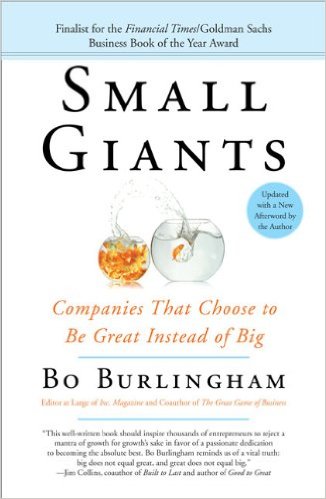 This book by Bo Burlingham (Editor at large of Inc. Magazine) is somewhat like Gladwell’s „David and Goliath“. It describes some really cool small and middle-sized companies that rejected the pressure of endless growth which would have killed their corporate culture, unique style and high level of provided services. They did not become Big, but considering their goals, their impact and their vision – they are Great.
This book by Bo Burlingham (Editor at large of Inc. Magazine) is somewhat like Gladwell’s „David and Goliath“. It describes some really cool small and middle-sized companies that rejected the pressure of endless growth which would have killed their corporate culture, unique style and high level of provided services. They did not become Big, but considering their goals, their impact and their vision – they are Great.
As far as „small giants“ go, I am not that excited about the Inc. Magazine anymore. Instead, I go with Monocle, Wired and FastCompany. Speaking of Monocle, it has launched two very useful „best practices“ books: The Monocle Guide to Better Living (on urbanistics) and The Monocle Guide to Good Business (on value-based small and middle-sized business).
11. Don Thompson – The $12 Million Stuffed Shark: The Curious Economics of Contemporary Art
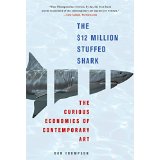 This easy-to-read and fascinating book deals with the economics and psychology of the contemporary art world. A must for everyone, irrespective of the profession – the book is a pleasure to read, and its intriguing ideas can be applied to any field. I was very much impressed by the story of Saatchi, who first founded one of the largest international advertising companies and has now also become a prominent art dealer. I always knew that advertising and contemporary art go hand in hand. Same actually goes for the venture capital business – just as in the art, the role of marketing and PR is more foregrounded here than that of fundamental economic analysis.
This easy-to-read and fascinating book deals with the economics and psychology of the contemporary art world. A must for everyone, irrespective of the profession – the book is a pleasure to read, and its intriguing ideas can be applied to any field. I was very much impressed by the story of Saatchi, who first founded one of the largest international advertising companies and has now also become a prominent art dealer. I always knew that advertising and contemporary art go hand in hand. Same actually goes for the venture capital business – just as in the art, the role of marketing and PR is more foregrounded here than that of fundamental economic analysis.
12. As far as fintech and future of the banking go, I’d recommend: Reggy de Feniks and Roger Peverelli – Reinventing Financial Services – What consumers expect from future banks and insurers (old friends and partners of Life.SREDA VC), 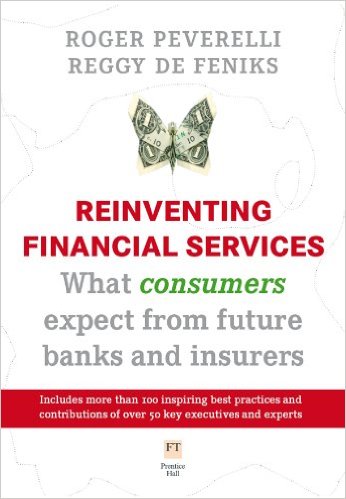
Bank 3.0 and Breaking Banks by Brett King (CEO of our portfolio company Moven), and Digital bank by Chris Skinner.
These guys do not just describe how fintech has evolved, they speak from experience, as witnesses and active participants of this industry’s birth and development.
13. As I was reading the „Tipping Point“, I also read some classic books on globalisation (now, with the second wave of China’s and India’s influence rise, it is a popular theme again): The World Is Flat 3.0: A Brief History of the Twenty-first Century by Thomas L. Friedman (I have recently been to China and India and thought of some chapters from this book)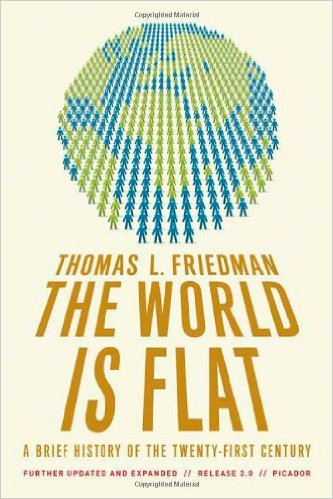
and No Logo by Naomi Klein (not that easy to read, but a classic of anti-globalism).
Capital in the Twenty-First Century by Thomas Piketty is a book that shook the world – Business Week, The Financial Times, The Economist, The New York Times and many other world’s leading titles published its reviews. Nobel Prize winners in economics commented on it. McKinsey declared it the business book of the year. Mervyn King, former Governor of the Bank of England, as well as Larry Summers, former Secretary of the Treasury of the US, were among its critics. Bill Gates even gave the author a call to share his opinion of the book.
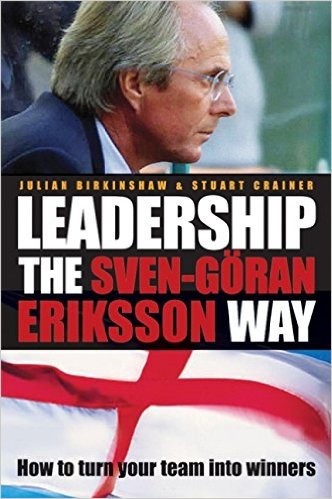 It might first seem that this is a book about the manager of the English national football team. In fact, it is not. It is about building, handling and leading a successful team. Placing these skills in the context of business might be helpful in finding new paths for your own advancement and contribute to the successful development of your team. The book addresses many questions Eriksson had to deal with as the team manager and leader:
It might first seem that this is a book about the manager of the English national football team. In fact, it is not. It is about building, handling and leading a successful team. Placing these skills in the context of business might be helpful in finding new paths for your own advancement and contribute to the successful development of your team. The book addresses many questions Eriksson had to deal with as the team manager and leader:
- How can a foreigner be at the head of the team which was earlier trained exclusively by the British?
- Moreover – how can the foreigner persuade the nation which had taught football to the whole world that he is the one who should train its team?
- How do you handle a star – say, David Beckham? (Seriously, imagine you were supposed to train Beckham, to manage him – what would you do?)
- What is better – a team of stars like Chelsea (consisting of star players bought into the team) or a star team like Manchester United (team of players who became stars through the years of training in the team and as a team)?
- How to make yourself ignore negative attitudes and biased judgements?
- How to develop trust in your players?
- How to learn to neglect prejudiced reactions and habits? (the study with monkeys and bananas is real fun)
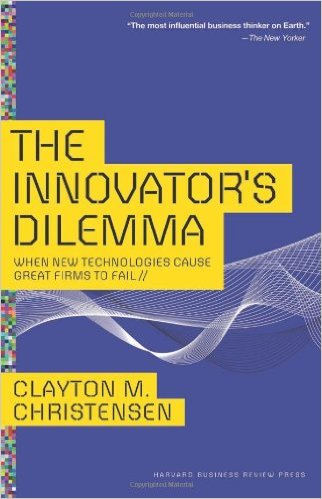 In this book Christensen analyses a large number of cases from different fields and identifies two types of innovations: sustaining and disruptive. He also explains why successful corporations (usually at the prime of their business life) confront the disruptive innovations, which often results in their failure. Sustaining innovations are always based on carefully done studies of market trends and aim to meet the customers’ needs and increase the loyalty of the existing clients’ base. They are meant to improve the performance of already established products and bring a fast (although not long-lasting) revenue increase. Such innovations always find support with the shareholders and the executive boards. Disruptive innovations are always connected with higher risks, they imply a new vision and often rely on rather intuitive ideas offering the customers something totally new, pursuing a breakthrough change resulting in a long-term revenue increase. Such innovations are harder to embrace, since they result in worse product performance in the short-term. With the focus on new products and technologies it takes time to find new customers and markets, however in the long-term it brings much more revenue and value than one could even imagine.
In this book Christensen analyses a large number of cases from different fields and identifies two types of innovations: sustaining and disruptive. He also explains why successful corporations (usually at the prime of their business life) confront the disruptive innovations, which often results in their failure. Sustaining innovations are always based on carefully done studies of market trends and aim to meet the customers’ needs and increase the loyalty of the existing clients’ base. They are meant to improve the performance of already established products and bring a fast (although not long-lasting) revenue increase. Such innovations always find support with the shareholders and the executive boards. Disruptive innovations are always connected with higher risks, they imply a new vision and often rely on rather intuitive ideas offering the customers something totally new, pursuing a breakthrough change resulting in a long-term revenue increase. Such innovations are harder to embrace, since they result in worse product performance in the short-term. With the focus on new products and technologies it takes time to find new customers and markets, however in the long-term it brings much more revenue and value than one could even imagine.
A classic example is the Amazon Kindle case. Amazon shareholders were always opposed to the Kindle project. However, now it generates a large part of Amazon’s revenue, with Amazon share prices rising rapidly since 2008 when Kindle was launched. Christensen shows that large and successful companies fail to apply disruptive technologies – they always pursue the short-term objectives at the expense of more strategic thinking and future value increase. The only way is for the corporation to single out a separate company/team responsible for the disruptive technologies implementation. This team gets a separate building, unusual job titles, they are not required to follow the dress code or the set working hours. These guys need to have the spirit of entrepreneurs, even if they are hired managers. The corporation creates sort of a startup for them in order to give them the feeling that it is their business, their company and only their effort counts.
16. Brad Stone – The Everything Store: Jeff Bezos and the Age of Amazon
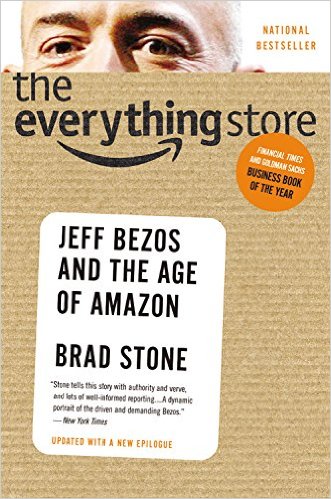 A very personal (and honest!) story of one of the most “intolerable” and outstanding entrepreneurs of the last 20 years. Since it opened its website in July 1995, Amazon.com Inc. has grown from a seller of books into one of the world’s biggest retailers. Its growth has been fueled by a consumer shift to online shopping and Amazon’s willingness to sacrifice profits to expand. Here’s a look at 20 years of sales for Amazon and three close competitors— Target Corp., Best BuyCo. and Barnes & Noble Inc.—and a look how Wall Street has valued those companies.
A very personal (and honest!) story of one of the most “intolerable” and outstanding entrepreneurs of the last 20 years. Since it opened its website in July 1995, Amazon.com Inc. has grown from a seller of books into one of the world’s biggest retailers. Its growth has been fueled by a consumer shift to online shopping and Amazon’s willingness to sacrifice profits to expand. Here’s a look at 20 years of sales for Amazon and three close competitors— Target Corp., Best BuyCo. and Barnes & Noble Inc.—and a look how Wall Street has valued those companies.
17. Adam Lashinsky – Inside Apple: How America’s Most Admired–and Secretive–Company Really Works
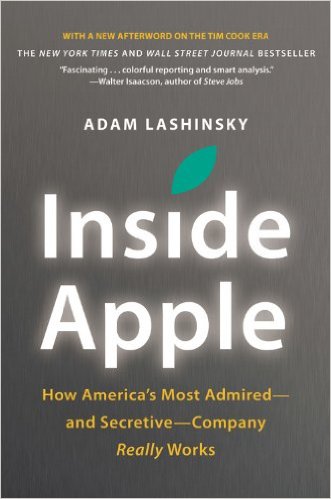 I had already read two books about Jobs before this one – both of them pretty crappy. This one is an action-stimulating thrill of a book! It makes you wonder, it raises questions, it triggers self-reflection, it makes you think-think-think! As far as Jobs goes, I have always admired his talent to evolve and change – from a hard-to-predict and reckless egocentric to the visionary leader. His marriage greatly contributed to it (his very interesting relationship story), as well as his mentors (on the topic of mentoring I would recommend “Getting There: A Book of Mentors” by Zoe Segal).
I had already read two books about Jobs before this one – both of them pretty crappy. This one is an action-stimulating thrill of a book! It makes you wonder, it raises questions, it triggers self-reflection, it makes you think-think-think! As far as Jobs goes, I have always admired his talent to evolve and change – from a hard-to-predict and reckless egocentric to the visionary leader. His marriage greatly contributed to it (his very interesting relationship story), as well as his mentors (on the topic of mentoring I would recommend “Getting There: A Book of Mentors” by Zoe Segal).
One more must-read – “Becoming Steve Jobs: The Evolution Of A Reckless Upstart Into A Visionary Leader” (about the book).
18. Leander Kahney – Jony Ive: The Genius Behind Apple’s Greatest Products
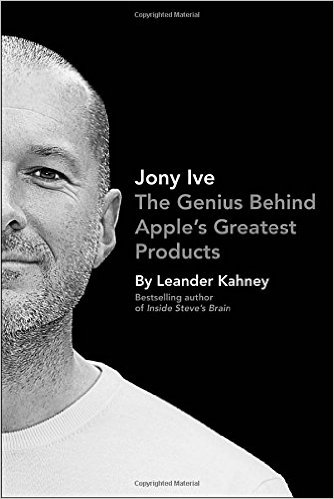 One more story behind Apple’s success – a biography of one of the most outstanding designers of our time, and one of the most prominent characters at Apple after Steve Job’s death. Too fairytale-like, in my opinion, but still one of the few opportunities to take a look at this exceptional designer’s life.
One more story behind Apple’s success – a biography of one of the most outstanding designers of our time, and one of the most prominent characters at Apple after Steve Job’s death. Too fairytale-like, in my opinion, but still one of the few opportunities to take a look at this exceptional designer’s life.
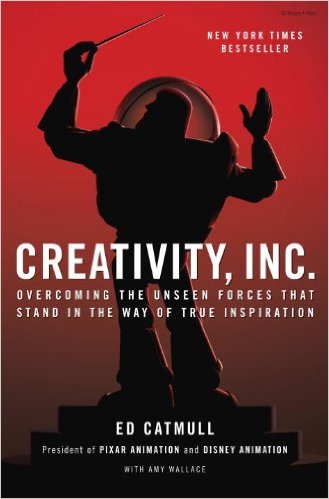 Describing the nuances of building a successful creative team Ed Catmull, one of the most skilled professionals in this field, does not try to speak vaguely. Quite on the contrary, in his book “Creativity, Inc.” he turns the sophisticated psychological theories into simple techniques which have made Pixar so widely admired, and so profitable. The studio, initially owned by Steve Jobs, has turned into one of the Hollywood legends and has for many years dominated the world of animation. What is the key to its success? The company has found the right approach to its, without doubt, greatest asset – the people.
Describing the nuances of building a successful creative team Ed Catmull, one of the most skilled professionals in this field, does not try to speak vaguely. Quite on the contrary, in his book “Creativity, Inc.” he turns the sophisticated psychological theories into simple techniques which have made Pixar so widely admired, and so profitable. The studio, initially owned by Steve Jobs, has turned into one of the Hollywood legends and has for many years dominated the world of animation. What is the key to its success? The company has found the right approach to its, without doubt, greatest asset – the people.
20. Lee Kuan Yew – From Third World to First: The Singapore Story – 1965-2000
 Lee Kuan Yew is the man who “created” Singapore the way we know it. A man of unbelievable will power and great vision. R.I.P…
Lee Kuan Yew is the man who “created” Singapore the way we know it. A man of unbelievable will power and great vision. R.I.P…
Singapore is just one big startup. Recently, taking a walk in Sankt-Petersburg, I thought of how much in common Peter the Great and Lee Kuan Yew had:
- They both had an awesome long-term Vision
- …and had the balls to realise it!
- They both built grand cities from scratch
- …and managed to do it during their lifetime!
- They both travelled a lot in order to gather the best practices from all over the world and then implement them at home. To gather more experience, they both invited a lot of foreigners.
- They both saw education as a priority and invested a lot into it.
The book „How Asia Works“ by Joe Studwell, a writer, a journalist, the former director of the research and advisory firm Dragonomics and the founding editor of the China Economic Quarterly, became one of the greatest hits in the economic literature last year. It was highly praised by the Economist and the Wall Street Journal. Bill Gates included it in his top-five list of the year (as number two) and wrote his own review. Studwell focuses on four countries which managed to achieve the highest economic growth (Japan, Korea, China, Taiwan) as well as on four biggest “losers” (Indonesia, Thailand, the Philippines, Malaysia). His statements about the winners and the losers can, of course, be argued with. Still, any well-grounded opinion of such an intelligent person motivates to look at the familiar stuff from a different angle.
21. Chris Anderson – The Long Tail: Why the Future of Business is Selling Less of More
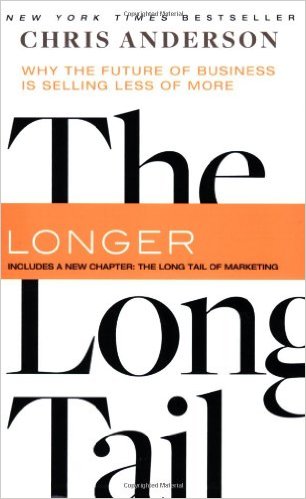 In “The Long Tail” Chris Anderson (editor-in-chief of Wired Magazine) describes how modern technologies change the distribution infrastructure of goods and contents. Now that there are no more constraints of physical shelf place and consumers are offered infinite choice online, the economy and the society are shifting away from the focus on the mainstream products and markets. More customized niches evolve, that can better satisfy narrow interests of the consumers, which leads to “democratization” of the distribution. Online retailers, such as Amazon, eBay, Netflix make more cumulative revenue selling niche-targeted goods from small “no name” producers, writers, musicians, etc., than they cash in from the widely-known brands and mainstream products. At the same time, the small producers, unknown designers and artists, who do not have the huge budgets for advertising or means to access the traditional distributional network, have the opportunity to appeal to the consumers, find their audience and be successful. Google Advertising has provided the tools allowing the small and middle-sized companies to reach their target audiences and be even more successful than the global market players with huge TV ratings.
In “The Long Tail” Chris Anderson (editor-in-chief of Wired Magazine) describes how modern technologies change the distribution infrastructure of goods and contents. Now that there are no more constraints of physical shelf place and consumers are offered infinite choice online, the economy and the society are shifting away from the focus on the mainstream products and markets. More customized niches evolve, that can better satisfy narrow interests of the consumers, which leads to “democratization” of the distribution. Online retailers, such as Amazon, eBay, Netflix make more cumulative revenue selling niche-targeted goods from small “no name” producers, writers, musicians, etc., than they cash in from the widely-known brands and mainstream products. At the same time, the small producers, unknown designers and artists, who do not have the huge budgets for advertising or means to access the traditional distributional network, have the opportunity to appeal to the consumers, find their audience and be successful. Google Advertising has provided the tools allowing the small and middle-sized companies to reach their target audiences and be even more successful than the global market players with huge TV ratings.
22. Anita Elberse – Blockbusters: Hit-making, Risk-taking, and the Big Business of Entertainment
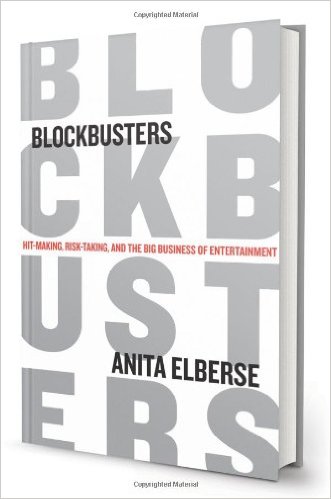 One of the most controversial books I’ve read recently. I’m used to the pragmatic approach: either something or somebody can be useful for what I do and might give me some new input or perspective, or not. With the “Blockbusters” I found myself in a mental trap: it gives more questions than answers and makes you feel rather doubtful than happy about the right path that you’ve chosen. Anita Elberse (Professor of business administration at Harvard Business School) confronts the “long tail” economic model with her “blockbuster” business approach.
One of the most controversial books I’ve read recently. I’m used to the pragmatic approach: either something or somebody can be useful for what I do and might give me some new input or perspective, or not. With the “Blockbusters” I found myself in a mental trap: it gives more questions than answers and makes you feel rather doubtful than happy about the right path that you’ve chosen. Anita Elberse (Professor of business administration at Harvard Business School) confronts the “long tail” economic model with her “blockbuster” business approach.
Elberse uses case studies from different industries (including companies from the “long tail” list) to argue for the blockbuster strategy. She contrasts the approach of Alan Horn when he was president and CEO of Warner Brothers (now he’s the head of Disney) to that of Jeff Zucker as CEO of NBC Universal. Horn followed the blockbuster strategy making a handful of big bets on “event movies” with largest budgets, most expensive actors, most gripping special effects and advertising on the broadest scale. This resulted in Warner becoming the first movie studio to surpass 1 billion dollars in domestic box-office receipts for 11 consecutive years and Horn himself being lured away by Disney. Zucker, in his turn, put quite a contrasting plan into place. He focused on cutting back on expensive dramatic content, instead acquiring rights to more reasonably priced properties; avoiding star actors and prominent TV producers, who demanded hefty fees; authorizing fewer costly pilots for new original series and launching more “copycat” series instead. The result was that NBC was no longer the top-rated TV network, but fell to fourth place, and Zucker was asked to leave his job.
Elberse points out the infinite variety of choices provided by the „long tail“. In her opinion, it’s just too much for the consumers, who get lost in this wide range of possible choices, seek quidance in the form of trusted brand names and in the end are grateful if someone makes the choice for them. Blockbusters solve this problem, making the choices for the consumers.
According to Elberse, more and more money will be flowing into blockbuster projects. 10% of Warner Brothers’ most expensive films required 30% costs and brought 40% revenue. Investments diversification no longer implies risk hedging – you can still become an outsider compared to those who placed their bets on a handful of blockbusters.
What I found interesting
- If your business is not entertaining, it’s not a blockbuster. You might offer a good product, which will fully suit the customers‘ functional However, if you are no fun and no cool, you won’t come in first. FC Real Madrid is not just about winning the matches, it’s also about the people watching the matches. These people want more show than football. The need the star players, the fascinating action, the loud happening, the colourful advertising. So, Real Madrid buys most expensive players and spends loads of money on PR and broad-scale advertising campaigns. They engage Cristiano Ronaldo like Hollywood movie studios engage Brad Pitt – show-business is just as well his territory as football. And thus, they win. (Although, I also have to give credit to FC Barcelona. They nurture their own star payers, perfect the technique, and they win just as well.) You might write good songs and sing them brilliantly – that alone won’t do it. You need to be like Lady Gaga who is dazzling her audience with the spectacular visual presentations, including coloured wigs, extraordinary makeup, most extravagant clothes and remarkable choreography.
- Companies from the „long tail“ list are going with the blockbuster strategy. Amazon is not just distributing the content, but also investing into its production (e.g. Bezos buying Washington Post). Netflix is not only streaming films and series, it has also invested into a very expensive Kevin Spacey series “House of Cards” (one of my favourite, by the way).
- „Consumers are more interested in culture than ” Producers in many branches think that their task is to provide products and services of high quality to the people. The people, however, spend most of their time on communication and entertainment. So, if in addition you can entertain/thrill/inspire them – they will sure choose you.
- Winners attract people on the psychological level. “If, say, a book is very popular and widely discussed in the mass media, it is more likely to be well-sold.” Being a blockbuster means showing everywhere and to everyone that you are the first, the greatest, the most important. It’s irrational, but it works. Being just good is not good enough. Be the best.
- You should back blockbusters with mighty advertising and marketing campaigns. As Alan Horn says, “Only a big event will get the people to leave their houses”. Blockbusters are so prominent only because they cost so much. “Only few in this world can afford to spend 200 million dollars on a film – and this is our advantage in this battle. If you have already spent 200 million dollars to produce a film, it’s easier to say, ‘Let’s spend another 100 million dollars to advertise it.’”. The blockbuster strategy should take away any uncertainty, both for the consumers and the partners.
- Creative products are very expensive to produce, but very cheap to reproduce. That is why it’s important to spend a lot on distribution and marketing to make a hit, “Advertise a lot to make sure that everyone is aware of it, and leverage your distribution power to make it easy for the public to obtain”. According to Elberse, the same goes for pharmaceuticals and IT. If you are creating a new Facebook, it’s not enough just to offer a good product, you need to invest a lot to make it a blockbuster. A movie ticket always costs 10 dollars, no matter the film quality. “Even the most passionate moviegoers won’t see more than one film a week. If the customer can only see one film this week, it must be my film”.
- Crowdfunding fintech-service KickStarter not only lets you buy the products and invest into projects, but also makes it an entertainment. Your investment is public, it becomes a social contribution, and you feel the satisfaction of contributing to a new start, of being a part of something great.
- Elberse herself is quite inspiring – Observer chose to attend her book presentation party, because of the hundreds of invitations to book launches they received none mentioned a party at a night club. At her book launch Elberse did not read some passages from her book, as it is normally done at such parties. She rocked the audience from the DJ booth. Her students pointed out that this is pretty much what her lectures at Harvard look like. She is one of the most popular professors with the most in-demand classes. “She is a rock star!”
What raised some questions
- The responsibility that goes with the choice-making. “With pop-culture there is always the fear that the one taking decisions for you will lead you in the wrong direction”. The great risk with the blockbusters is that the one making decisions on the financing may have no taste.
- „Buying is entertainment“ kills „buying is voting“. In order to promote themselves, their values, their lifestyle, many companies have to a certain extent deprived the political elections of their function to shape the future. A lot of consumers began to pay more for the products and services of those companies, which spend a part of the revenue on certain social initiatives, which should contribute to a better future much more, than another election of another politician. Entertainment, however, kills this social function of buying. (Although the Obama case shows that you can be smart and funky at the same time.)
- I think, this book is more useful to „blockbuster people” than blockbuster companies. It points out that there are more companies ready to invest into superstars, than there are actual superstars, which is why the latter are highly overpriced.
- The blockbuster strategy kills innovations. Not always, but very often.
- Any culturological study – be it on classical antiquity or contemporary hipsters – shows that every culture (including consumer culture) needs excessive elements in order to develop. Blockbusters need the „long tail“ in order to exist. In my opinion, mediocre comedies are necessary, because they ensure working places in the movie industry, create a larger choice in the cinemas, let cameramen and film editors work on their skills and the actors – perfect their technique.





